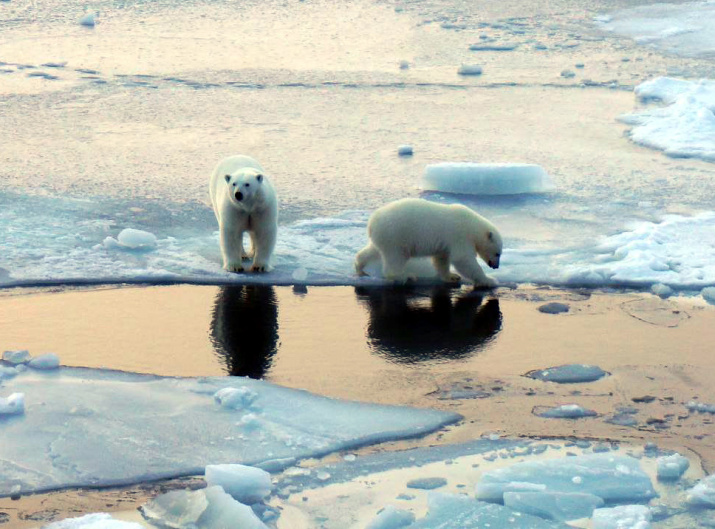The area of sea ice in the Arctic has been shrinking twice as fast in the last 20 years compared to the period of 1979-1999. This is one of the most striking manifestations of climate change on the planet. At the same time, non-linearity and differences in the dynamics of processes in the Arctic regions in different periods are observed. Climatologists at the Institute of Geography of the Russian Academy of Sciences came to this conclusion.
Russian geographers have identified two periods that are fundamentally different in terms of ice melting rates – 1979-1999 and 2000-2019. A regional analysis of the changes revealed that in the Barents Sea during the cold season in the past 20 years, the area of sea ice began to shrink twice as fast compared to the last two decades of the last century. A significant increase in the rate of ice melting was also observed during the warm period in the Kara Sea, the Laptev Sea, the East Siberian Sea, the Beaufort Sea, in the central part of the Arctic south of 80th parallel north, as well as in the Northwest Passage of the Canadian Arctic Archipelago.
At the same time, the maximum rate of decrease in the area of sea ice in the Arctic as a whole occurred in August-October (860-880 thousand km² over 10 years). From December to April, up to 80% of losses in the entire Arctic region were due to the reduction of ice fields in the Barents Sea and the Okhotsk Sea. In June-July, the Kara Sea, the Laptev Sea, and the East Siberian Sea played a decisive role in changing the trend. In August-October, the main contribution was made by the central Arctic south of 80th parallel north and the East Siberian Sea. In November-December, the most significant reductions in the area of ice occurred in the Barents Sea, the Kara Sea, Baffin Bay and Hudson Bay.
The authors of the study believe that the accelerated melting of Arctic sea ice at the beginning of the 21st century may be due to human activity and an increase in the amount of greenhouse gases in the atmosphere. The process may also reflect the transition to a new dynamic state of the entire Arctic climate system, when the transfer of heat to the Arctic from the ocean and atmosphere increases and positive feedback in this system is activated.
The research by the specialists from the Institute of Geography of the Russian Academy of Sciences Tatiana Matveeva and Vladimir Semenov is published in the journal Atmosphere.


